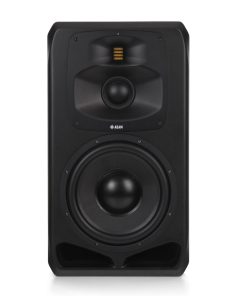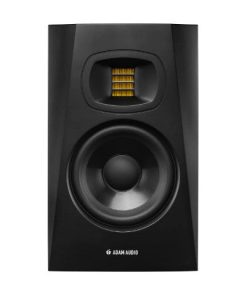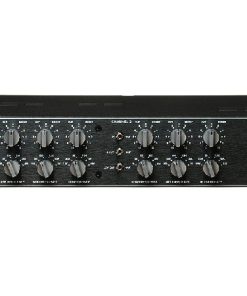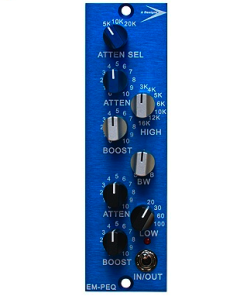Arturia V76-Pre License – Finest Vintage Tube Preamp Arturia
$ 99,00 $ 49,50
If you want to explore the sound that defined 60s pop music, this is the plug-in for you. Combining the accurately emulated V612 EQ and V76 preamp in one unit, you can enjoy that legendary sound in your virtual studio.
From its broadcast origins to its use on some of the best-selling, most enduring records of all time, the V76 preamp has played a pivotal supporting role in the story of pop music.
Loved by the engineers and technicians, and incorporated into the iconic REDD mixing consoles, the V76 coveted for that “White Album” sound, every major studio in the world wanted a piece of the action, and tens of thousands of Telefunken preamps were created to meet the demand.
These days, due to scarcity and cost, it’s practically impossible for most musicians and producers to pick up one of these legendary preamps.
In the same way Arturia built its reputation on recreating legendary, rare synths and keyboards through advanced modelling, we decided to use our TAE® technology to give everyone the chance to experience that legendary V76 sound.
By studying its sound and design, right down to the subtleties of each electronic component, we have created a virtual preamp that brings quintessential vintage tone to a whole new generation of musicians.
Vintage soundwith today’s technology
“… how does a software preamp work? My audio interface already has preamps, what difference will it make?”
Great question!
Simply put, preamps were originally created to make signals louder. They would take a low-powered audio signal – from a microphone or instrument, for example – and amplify them so that they were the strong enough for mixing, while minimizing any added noise. North West German Radio were early pioneers of this technology, creating high quality preamps for broadcasting. Enhancing NWGR’s design, Telefunken produced the V72, which later evolved into the studio-focused V76, and became a staple in studios around the world.
Fast forward 70 years, and the pro audio industry has changed a little. Superbly transparent, low noise, affordable preamps are included in almost every audio interface. However, the subtle tonal shift that vintage preamps gave to the audio they treated, especially vacuum-tube designs like the V76, are missing today.
We wanted to give you the best of both worlds: the ability to color the sound of your modern recorded audio and virtual instruments with the iconic tone of classic studio gear.
Adding that“je ne sais quoi”
It’s difficult to let new producers and mix engineers know just how important the subtle sound-shaping power of preamps are, we’re talking about something understated. It’s not a flashy synth or an extreme audio-mangling plug-in.
At their core, all of our preamp plugins provide 2 main benefits. That’s what we think, anyway. How you decide to use Pre V76 is up to you.
One of the things we love doing is using Pre V76 it to add authentic-sounding, searing-hot tube drive to guitars and synths and running them through cab simulation. How will you use it in your setup?
A link to the past
There’s something quite magical about hearing classic songs. If you let your mind drift, you’re transported to a totally different time: different fashion, different politics, different tastes, different lives. If you’re after “that” 60’s sound, you can’t go far wrong with Pre V76. Added to individual tracks in your song, you can get that tonal push and lush soft-clipping that comes with valve-driven vintage electronics.
Mixing confidence
Load up Pre V76 as an “insert” effect on a channel, dial in an appropriate preset, and most of the hard work has been taken care of. You’ll now be mixing with the sound of a classic analog console, with the parameters set up by a top sound designer. Now you’re free to get creative, safe in the knowledge that you have over half a century of legendary pro audio heritage supporting you.
Crackingthe code
Pro audio equipment doesn’t become legendary without a story to tell. To say the legacy of the Telefunken V series preamp is huge would be an understatement.
Its rich tone and huge creative potential made it an integral part of Abbey Road’s setup at arguably the most pivotal point in their history. Despite being known as the go-to microphone preamp for radio broadcast and studio use, and first-choice mastering amplifier, working V76 units are hard to come by. Fortunately for us, we were able to start and end our quest for ultimate tube-tone in France.
At Question De Son, a highly-esteemed recording studio in Paris’ 10th arrondissement, we were able to study an original, sequential pair of V76/80 preamps. Models 4754 had 4755 have been in active service for 70 years, and made the perfect subjects for our study.
We didn’t just want to create a carbon copy, but rather give you the best elements of Telefunken’s sonic signature. For example, made the gain controls continuous for more precise control, removed the seldom-used “broadcast utility” 3kHz low-pass switch, and refined the boost and cut range of the V612 EQ, giving you studio tools that are more usable for the modern musician.
Thanks to the tireless efforts of Arturia’s research, modelling, and development teams, you too can include the tone of the fabled V76 preamp and V612 equalizer into your DAW setup.
Main Features
Virtual recreation of vintage German valve preamp
- 73 dB virtual continuous input gain
- +/- 24 dB Output trim level
Germanium EQ & filter section emulation
- Include bypass & phase Inversion switch
High Tone Filter
- High Shelf band
- +/- 10dB gain
- 5kHz fixed frequency
Midrange Bell Filter
- +/- 18 dB gain
- Continuous frequency range from 360Hz to 7.2kHz
Low Tone Filter
- Low Shelf band
- +/- 10dB gain
- 100Hz fixed frequency
High Pass Filter
- Cut frequency at 80Hz, 300Hz and 80+300Hz for steeper slope
1 & 2 channels plugin versions
3 stereo modes
- Stereo Link
- Dual Mono Channels
- Mid/side (M/S) encoding-decoding for advanced stereo processing
3 sensibility mode (-18dBFs, -12dBS, -8 dBFs)
- 3 sensibility mode (-18dBFs, -12dBS, -8 dBFs)
- Analog clipping indicated by bright red color
Comprehensive set of presets
State-of-the-art TAE® analog modeling
Platforms specifications
Windows
- Win 10+ (64bit)
- 4 GB RAM
- 4 cores CPU, 3.4 GHz (4.0 GHz Turbo-boost)
- 1GB free hard disk space
- OpenGL 2.0 compatible GPU
Required configuration
- VST, AAX, Audio Unit, NKS (64-bit DAWs only).
Apple
- Mac OS 10.13+
- 4 GB RAM
- 4 cores CPU, 3.4 GHz (4.0 GHz Turbo-boost) or M1 CPU
- 1GB free hard disk space
- OpenGL 2.0 compatible GPU
Prompt Delivery and Professional Packaging
Our long-standing partnership with UPS FedEx DHL and other global carriers lets us offer a range of shipping services. Our warehouse staff is extremely skilled and will package your items according to our precise and exact specifications. Your goods will undergo an extensive inspection and be safely packaged prior to being sent out. Each day, we ship to thousands of customers in many countries. The fact that we are committed to becoming the biggest online retailer in the World is clear. These warehouses are in Europe in the same way as they are in USA.
Note: Orders that include more than one item are assigned a processing period depending on the item.
Before shipping, we will inspect thoroughly the items you have ordered. Most orders are shipped within 48 hours. Expected delivery time is between 3-7 days.
Returns
Stock is dynamic. It's not entirely managed by us since we are involved with multiple entities, including the factory and the storage. The actual stock can change at any moment. It is possible that your order may be out of stock once the order has been placed.
Our policy lasts for 30 days. We cannot exchange or refund your order if it has been 30 days from the date of purchase.
For your item to be returned it must be in its original packaging, unopened and in the condition you received it. The item must be in its original packaging.
Related products
500 Series
Accessories
Accessories
Monitor Systems
Monitor Systems
Monitor Systems
Recording Equipments
Microphones
Monitor
Microphones
Recording Equipments
Headphones
Monitor
Equalizers
Recording Equipments
Accessories
500 Series
Equalizers
Microphones
Microphones
Recording Equipments
Subwoofer
Accessories
Monitor
Monitor
Microphones






























































